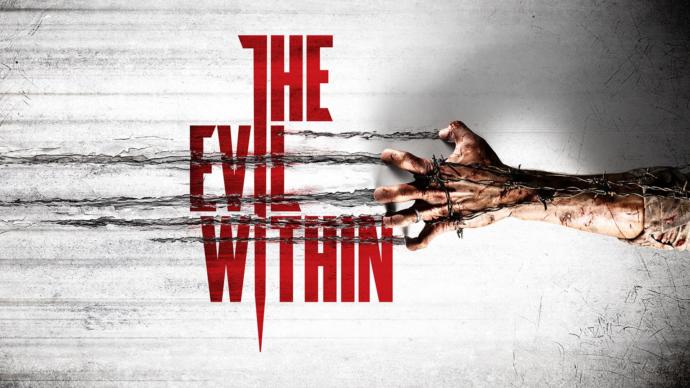Psychology has a very troubled history and has some stains on it’s reputation. Even today, the human mind is still a mystery although we know a lot more of the human brain than previous generations, we still have along way to go. In this take I’ll be sharing some personal stories, historical events/incidents, information about the field of psychology and how it is depicted in the entertainment industry. Even though I’ve never been institutionalized in a mental hospital(and I never plan on being institutionalized), I’ve done enough research to know what mental institutions are like.

1.) Brief history of psychology
Ancient civilizations like China, Egypt and Greece had concepts of psychology from philosophers such as Lao Tsu and Plato. Some early forms of therapy that also do good are Qigong from China and Yoga from India which are still practiced today. Asylums have existed since the medieval ages but nowadays they are called mental institutions rather than asylums.
It wasn’t till the 1800s when experimentations and science started to uncover more knowledge of the mind. Psychology continues to evolve even today in the 21st century.
2.) Personal experience with psychology and psychiatry
Several months ago, I wrote a take where I discussed my personal issues(OCD and anxiety) that required proffesional help. Back in 2010 when I was only 14 years old, my mom asked me if I needed some help at first I was reluctant but I then realized it could help. it could help. So for 6 years, I visited both a psychologist and psychiatrist once a month. In 2015(year I graduated from high school) I officially stopped going to both the psychologist and psychiatrist because my parents thought it would decrease my chances of finding a job in the future. I only noticed a minor improvement but it got worse for a few months until I found some herbal remedies for my OCD which helped a lot more than the psychiatric medication ever did. While is still have minor OCD and anxiety, it’s nowhere near as bad as it use to be.
3.) Being different does not mean mental illness
The one problem with people who follow societal norms is that they assume that a person who acts of thinks differently have some sort of mental health issues. What they fail to understand is that personality varies from person to person. When I was 12 years old, my 5th grade teacher assumed something was wrong with me because I was “too quiet” and “too mature” for my age. He got my parents consent so I could get in school counseling. Every day before lunch a woman(counselor) dressed in a business suit would come to my class for me and I’d follow her to another room that had a table and two chairs on opposite sides. I’d sit on one and she would sit on the other one. She was polite and would ask me several questions and give me arts and crafts.
4.) Mental health institution restrictions
Another issue is how people assume they can call a person “insane” and expect mental institution staff to come get the person. Now in the 21st century, there are many rules that have been implemented to prevent people from being wrongly hospitalized.
Defamtion of character: If a person accused another person of being “insane” or “needing help”, the person being accused can sue the accuser for attempting to ruin his/her reputation. This isn’t the 20th century anymore where a person can use a mental hospital as a dumping ground for people they want to get rid of. This is the 21st century.
mental institutions no longer behave like “secret police”: From the medieval ages through the 20th century, mental health institutions known as asylums in those days, were notorious for sending out some orderlies to snatch Suspected lunatics off the streets. This kind of practice is very rare nowadays. If someone starts acting “crazy” in public, the police will be called before a group of “orderly goons” show up. It’s up to the police to decide if the troublemaker requires to be temporarily sent to a mental institution to spend the night. If a group of orderlies do decide to show up to take away a “crazy” person, the person can sue the mental hospital.

Mental health hospitals cannot hold people against their will: Nowadays, mental health hospitals cannot hold a person against their will regardless of their diagnosis unless they have lost all sense of reality and cannot control their actions.
5.) The dark history of mental health hospitals
Although most mental hospitals nowadays treat their patients humanely, there weee days when mental institutes would treat their patients like lab rats and prisoners. Practices such as crude lobotomy with ice picks, flogging, Sex abuse, starvation etc use to be practiced in various asylums. Here are two of the many cruel asylums that existed.
Topeka state hospital: A notorious insane asylum located in Kansas that was active from 1872-1997. It was known for it’s staff sexually abusing(including raping it’s patients) and worst of all, approximately 54 of it’s patients were castrated. This is perhaps the worst mental hospital that has ever existed.

Trans-Allegheny Lunatic Asylum: Another notorious mental hospital active from 1864-1994. This one was located in West Virginia and had staff members that locked it’s patients in cages, used crude instruments(ice picks) for lobotomy and neglected it’s patients causing deaths. 
6.) Media depiction of mental hospitals
Due to the dark past of mental hospitals, most of the movies are horror themed depicting mental hospitals as being dark, run by abusive orderlies that behave like prison guards, sadistic psychiatrists and straitjackets. After all of the cruel things that happened in asylums, it’s completely justified to depict asylums like this in movies and tv shows, so people will never forget what use to happened in asylums and so the cruel practices will never be repeated. 
The evil within: A horror video game that takes places in a virtual reality system inside a mental hospital that is a puppet of a much larger fictional secret organization called Mobius and runs illegal experiments on it’s patients.
A cure for wellness: Although the story is a combination of sci-fi, mystery and horror, it does represent the deceiving tactics asylums used to cover up their practices.
It’s kind of a funny story: This movie depicts modern day mental institutions. In this movie the mental institution seems to treat it’s patients better. The patents wear their own clothes and have more freedoms than the previous three titles.

7.) Mental institution policies
Thankfully nowadays, most mental institutions treat their patients humanely and offer various freedoms and privileges. Each mental institution has different policies on what you can and can’t bring. http://www.cracked.com/personal-experiences-1280-5-things-movies-dont-tell-you-about-mental-institutions.html
You can bring in your personal belongings: Most mental institutions allow their patients to bring in their own clothes and accessories. The only restrictions are weapons, drugs, tank tops, crop tops belts and drugs. If a patient wants to dress stylish, they can.

Electronics: This rule varies, some mental institutions allow them and others don’t. If a patient can’t live without their smartphone or laptop, then they should find a mental institution that allows electronics.
Family members can visit patients: Mental institutions are no longer dumping grounds where you can turn in people who you don’t want to deal with anymore. Family members are allowed to visit their institutionalized family member and bring treats or call them via phone.

Patient rooms not cells: Padded rooms are for the most part phased out. Most mental hospitals give their patients a nice room that resembles a room found in a house. Similar to the one pictured below.

Straitjackets are rarely used: Nowadays, straitjackets are not used as much as they use to be used. Nowadays, sedatives and more comfortable restraints are used. Not only are straitjackets uncomfortable, patients can escape from them.
While almost all mental hospitals treat it’s patients humanely, people need to ensure that the cruelties of early mental hospitals don’t ever happen again. It’s sad to think that most of the orderlies and psychiatrists that mistreated their patients were never brought to justice. Perhaps a legal organization that brings those orderlies and psychiatrists to justice needs to be formed. However, it’s good to know that mental hospitals nowadays continue to become more and more humane.
Most Helpful Opinions